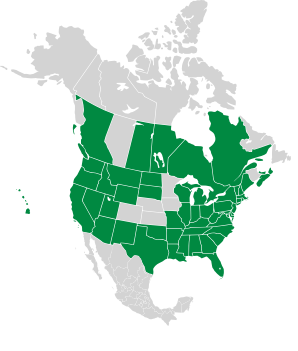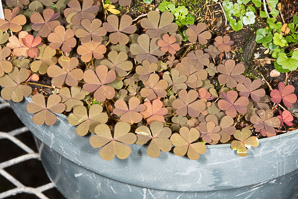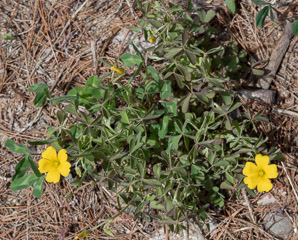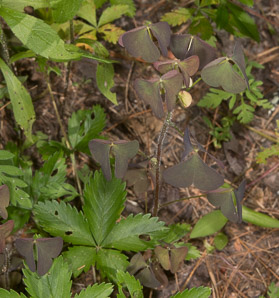|
Oxalis corniculata L.
Creeping woodsorrel, procumbent yellow sorrel, sleeping beauty, creeping wood sorrel
| Kingdom | Plantae | Plants, but not fungi, lichens, or algae |
| Subkingdom | Tracheobionta | Vascular plants—plants with a “circulatory system” for delivering water and nutrients |
| Division | Magnoliophyta | Flowering plants, also known as angiosperms |
| Class | Magnoliopsida | Dicotyledons—plants with two initial seed leaves |
| Subclass | Rosidae | Roses, legumes, proteas, dogwoods, hydrangeas, mistletoes, euphorbias, grapes, many more |
| Order | Geraniales | Balsams, mustards, geraniums, wood sorrels, nasturtiums, others |
| Family | Oxalidaceae | Wood sorrels |
| Genus | Oxalis | Wood sorrels (Oxalis means “sour”) |
| Species | corniculata | Horned. |
About plant names...
Creeping woodsorrel is either native to or naturalized in North America.
They are common, preferring waste places, lawns, and gardens.
Plants: Plants are low-growing, prostrate, up to 4″ (10 cm), and rather delicate
and vulnerable-looking. It spreads by producing creeping, horizontal
stems (stolons) up to 12″ (30 cm) long.
Leaves: Trifoliate, with three rounded heart-shaped leaflets, like clover.
They fold up like miniature parasols when there is little sun.
Leaves are purple-green or dark purple, and somewhat hairy, especially along leaf margins. Leaves are ⅛-⅜″ (6-10 mm) × ⅛-⅞″ (4-25 mm).
Leafs stalks are longer than in most plants, up to 2½″ (7 cm).
Flowers: Flowers are bright yellow, with five petals, in clusters of
2-7, ⅛-½″ (3.2-12 mm) around, appearing from June to September. Flower stalks are erect or ascending.
Fruits: Narrow, cylindrical capsules, ⅛-1″ (6-28 mm) long.
When it dries it “explodes,” spreading is 1/32″ (1 mm) seeds.
These are closely similar (see also this comparison):
|
|
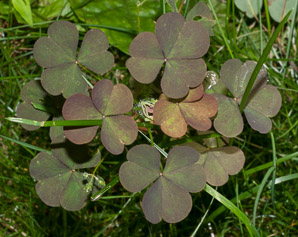
7/15/2012 · Fort Point State Park, Stockton Springs, Maine · ≈ 9 × 6″ (22 × 14 cm) 
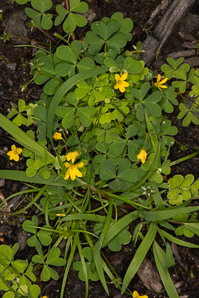
7/15/2021 · Tom and Susan’s, Highland Green, Topsham, Maine · ≈ 6 × 9″ (15 × 22 cm) 
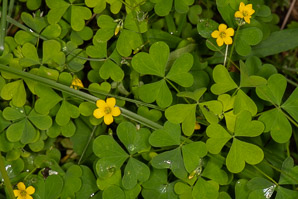
7/20/2021 · Otter Brook, Harpswell, Maine · ≈ 7 × 4½″ (17 × 11 cm) 
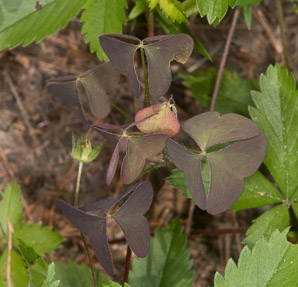
6/23/2017 · Nashua River Rail Trail, Groton, Massachusetts · ≈ 4½ × 7″ (12 × 18 cm) 
|







